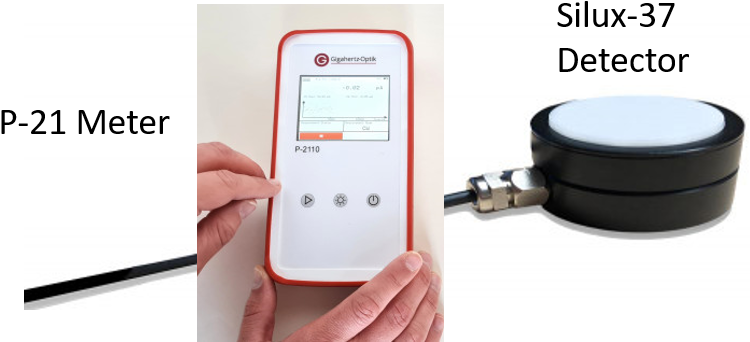A new unit of irradiance has been proposed which is geared towards the recent class of low-light silicon CMOS imaging detectors with significantly increased NIR responsivity; devices intended as potential substitutes for image intensifier tubes in night vision devices. This unit is called silux, a portmanteau of silicon and lux. The authors previously created a unit of irradiance called swux, a blending of SWIR (shortwave infrared) and lux.

Image Credit: Gigahertz-Optik
Gigahertz-Optik, in collaboration with Oculus Photonics, Santa Barbara, CA, USA and HENSOLDT Optronics GmbH, Oberkochen, Germany, has developed the silux radiometer that will act like a single giant CMOS imaging sensor (CIS) camera pixel. A standard silux unit and radiometers calibrated in silux units will enable engineers and technicians to measure ambient lighting conditions in an unambiguous manner, enabling the comparison of performance for different cameras under different lighting conditions, since the silux unit, combined with a knowledge of the specifications of the optics and the sensor, can be used to directly predict the number of photoelectrons/second/pixel.
The silux spectral response function Silux(λ) ranges from 350 nm to 1100 nm. A novel silux shaping filter design used in combination with a high-sensitivity silicon photodiode irradiance sensor yields the silux spectral response function - Gigahertz-Optik detector model Silux-3702. For highest possible sensitivity the recommended optometer for use with the Silux-3702 is the P-21, a multi-purpose touchscreen optometer for measurement of CW, single pulse and modulated optical radiation in any photometric and radiometric application. This filter radiometer enables easy deployment of a standard silux measurement setup in every lab.
The main application for a silux filter radiometer is the characterization of how well a particular low-light outdoor irradiance condition will produce signal in a CIS-based imaging system.
The Silux-3702 detector is traceably calibrated in integral silux units of A/(silux).